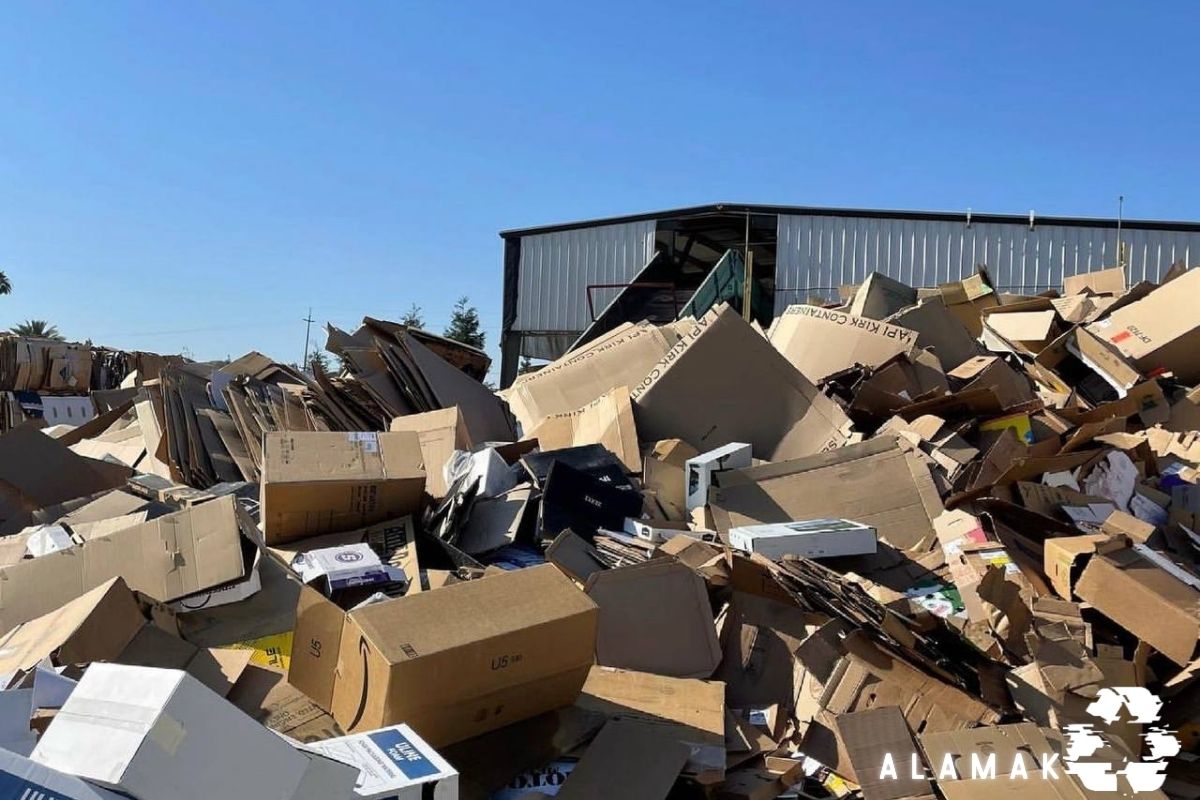

Case Study Info
- Clients Rich Pavil
- Category Education & Recycle
- Date January 25, 2022
- Location Saint Petersburg
Recycle Process
Recycling OCC 11 and 12 Waste: ALAMAK Process (40,000MT, Origin: Russia)
Collection Process:
1. Collection Centers: ALAMAK establishes dedicated collection centers at strategic locations to facilitate the collection of OCC 11 and 12 waste (newsprint).
2. Collaborations: ALAMAK collaborates with local recycling companies, waste management facilities, and businesses to ensure a steady supply of OCC waste.
3. Community Participation: ALAMAK promotes community participation by encouraging individuals, schools, offices, and other establishments to separate and collect OCC waste for recycling.
Sorting and Segregation:
1. Initial Sorting: Upon collection, the OCC waste is sorted based on its quality, grade, and contamination level, particularly distinguishing between OCC 11 and OCC 12.
2. Contaminant Removal: Any non-paper materials, such as plastic, metal, or glass, are removed from the OCC waste to enhance the recycling process and ensure purity.
3. Manual Inspection: Trained personnel visually inspect and remove any remaining contaminants and non-recyclable materials from the sorted OCC waste.
Shredding and Pulping:
1. Shredding: The sorted OCC waste is shredded into small pieces to increase the surface area for further processing.
2. Pulping: The shredded OCC waste is mixed with water in a pulper, creating a slurry mixture. Chemicals may be added to break down ink and fiber bonds.
Screening and Cleaning:
1. Screening: The pulped mixture passes through screens that separate larger contaminants and debris from the fiber pulp.
2. Cleaning: The pulp undergoes a cleaning process, which includes centrifugal cleaners and flotation cells, to remove ink, adhesives, and other impurities.
Deinking and Bleaching:
1. Deinking: The cleaned pulp is subjected to a deinking process that involves flotation cells and surfactants to remove residual ink particles.
2. Bleaching: Depending on the desired end product, the pulp may undergo a bleaching process using chemicals to remove any remaining color and brighten the fibers.
Papermaking:
1. Forming: The cleaned and bleached pulp is diluted with water to achieve the desired consistency, and it is then spread onto a wire mesh screen to form a continuous paper web.
2. Pressing and Drying: The paper web passes through pressing rollers to remove excess water and is subsequently dried using heated rollers or air drying methods.
3. Coating (optional): In some cases, the recycled paper may undergo a coating process to enhance its surface properties, such as smoothness or brightness.
Quality Control and Testing:
1. Quality Assurance: ALAMAK maintains strict quality control measures to ensure that the recycled paper meets industry standards and customer specifications.
2. Testing: Samples are collected and subjected to various tests, including basis weight, moisture content, strength properties, and printability evaluations.
Packaging and Distribution:
1. Packaging: The recycled OCC paper is packaged in appropriate bundles or rolls, depending on customer requirements, ensuring secure transportation and storage.
2. Documentation: ALAMAK prepares necessary documentation, including certificates of origin, quality inspection reports, and shipping documents, to facilitate smooth export and import processes.
3. Global Distribution: ALAMAK collaborates with international partners, distributors, and customers to supply recycled OCC paper worldwide, catering to the demands of various industries.
Environmental Impact and Sustainability:
1. Resource Conservation: Recycling OCC waste conserves valuable wood resources and reduces the need for virgin fiber extraction, thereby preserving forests.
2. Waste Reduction: By diverting OCC waste from landfills, ALAMAK contributes to waste reduction and promotes a circular economy.
3. Energy Savings: Recycling OCC waste consumes less energy compared to producing paper from virgin materials, leading to reduced carbon emissions.
ALAMAK’s comprehensive
recycling process for OCC 11 and 12 waste ensures the production of high-quality recycled paper products. Through efficient collection, sorting, and processing methods, we strive to meet the global demand for sustainable paper solutions while minimizing environmental impact and promoting a greener future.
Related Projects


